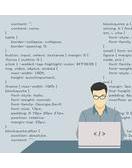Speed and performance are the two major factors being considered by the search engines to take your website on top of the search results. The logic behind it is that fast loading pages will undoubtedly improve the user experience and thereby increase the page views and also lessen bounce rates, which will further contribute to WordPress SEO. Many factors affect the performance of a website and loading speed of pages. Here, we will discuss some of the top WordPress speed and performance optimization tips as suggested by the experts.
Why is speed essential?
Studies have shown that over the last ten years, with the influence of information technology and internet on human beings, the attention span of an average human dropped from 20 seconds to 7 seconds.
That is a crucial input for a website owner that there is only a very minimal time for you to display your content in front of the user’s eyes and hold them back on your page. A slow website, which goes beyond this minimum attention span will inevitably prompt the users to switch away from that web page.

Focused research on the effect of loading delays by covering Amazon, Google, and all other significant sites had shown that:
- Every one-second delay in loading time may lead to 11% drop in page views, 16% drop in customer satisfaction, and altogether 7% loss in terms of conversion.
Above this, Google and other major search engines penalize the slow websites, which will further cause lower traffic. Taking all these into consideration, if you want more traffic and more conversions through your site, the first thing you need to ensure is SPEED, which needs to be ensured during the web development and design itself. The golden rule you can keep in mind is that “an ideal page will load in less than 2 seconds”.
Know what slows down the WordPress sites
There are many reasons why your page may load slowly.
- Poor hosting – If the hosting server is not configured correctly or not meeting the needed specs, it will hurt your page loading speed.
- Configuration of WP site – For reasons like the site not serving cached pages, it may overload the server end thereby end up with slower loading or crash down.
- Larger size – As per Expert SEO, images and other content which are not optimized for web will cause loading delays.
- Incompetent plugins – You need to very careful while integrating useful plug-ins as some poorly coded plugins may slow down your loading.
- Additional scripts – Additional scripts like font loading, and ads can also have a negative impact on loading speed.
Let’s next explore the tops tips on how to tackle the above issues and build a performing WP site.
Hosting
Hosting service provider you choose plays a vital role in the performance of your website. Shared hosting providers usually host many sites on a single server, which means even if your co-located website gets significant traffic, it will affect the performance of your site.
Services like managed hosting of WordPress may give you better-optimized configurations. Check for automatic backups, and automatic updates while considering managed WordPress hosting services. The best option is to consider enterprise WordPress hosting, which may be a bit costlier but can ensure optimum speed and performance to your site.
Configuring WP site for speed

WordPress creates dynamic pages by default. WordPress runs a process to search for required information and put it together to display to a user, and this process takes time and may slow down the loading if multiple users request a page at a time.
That is the reason you use a caching plugin for WordPress. Caching will make your site two to five times faster. With caching activated, Instead of going for the step by step page generation process each time, the cache plug-in will make a copy of the page after the first load, and then this cached version is displayed on subsequent visits without the need for loading from the server.
Image optimization
Pictures, infographics, and images bring your page to life and boost user engagement. Studies have shown that having colored visuals on the page make people engage 80% better with the content.
However, if the images are not optimized in terms of size and dimensions, it may take a lot of time to get loaded to the page and crate issues. So, before uploading a photo, make use of an advanced photo editing software to optimize the image for web.
More than these, WordPress is an open source project, which gets updated frequently. Each of these updates will offer new features and also fixes for existing bugs. As a site owner, you need to keep your WP site, theme, and plugins updated based on the later specifications. Not following it overtime will cause your site to slow done and also get outdated overtime. Updating is essential to avoid the security threats too.

